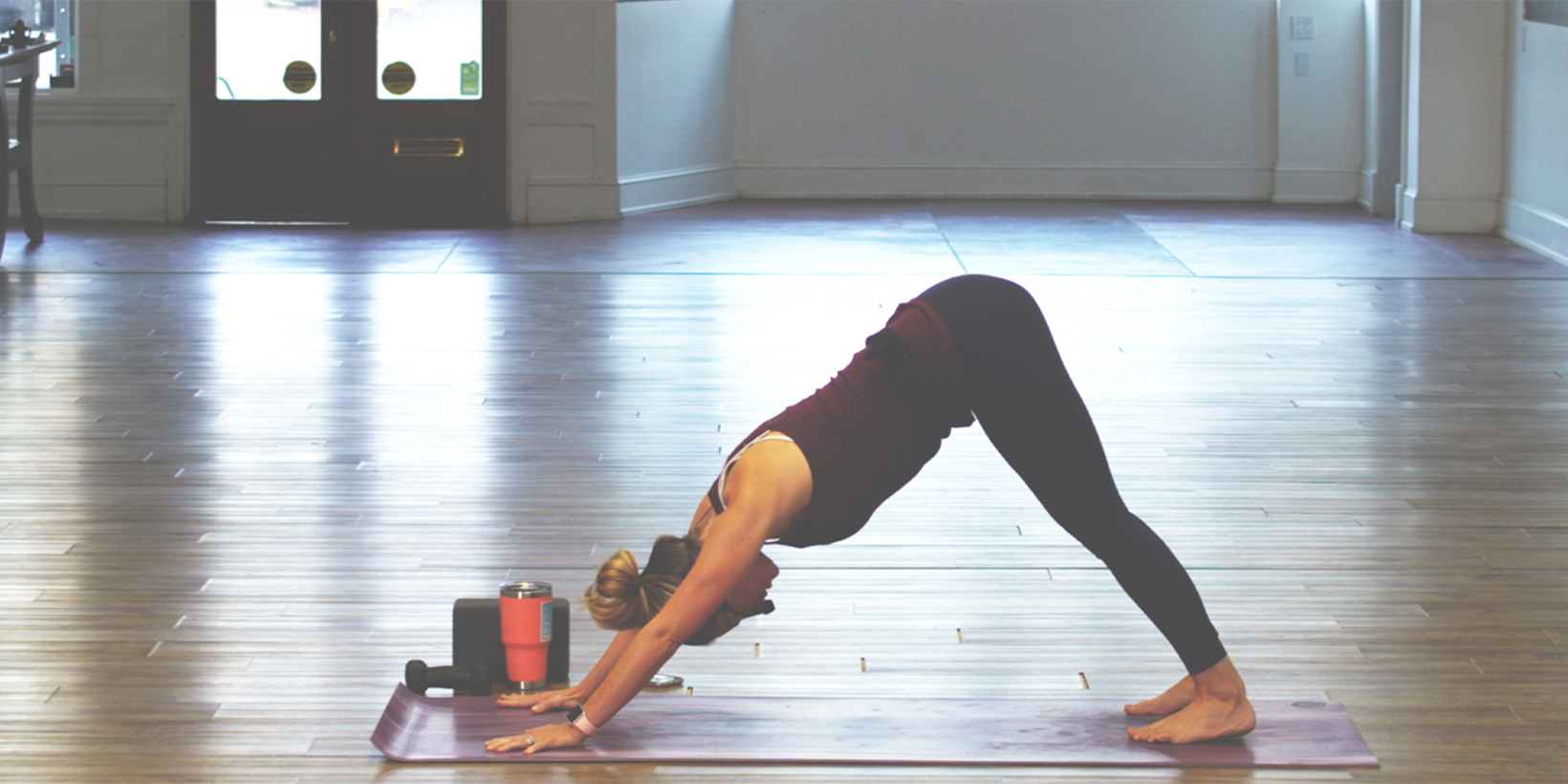
Should you boost your yoga business by taking an online teacher training?
With normal life still on hold for many of us, you might still be waiting to get fully back into the studio and teaching your regular classes. And for most of us, that ‘new normal’ probably still includes a lot of online classes. Along with online versions of everything else in the yoga world, it would be hard to have missed the huge amount of courses and teacher trainings that have shifted online.
Whether it’s converting a 200-hour YTT into a 500-hour or adding something more niche like becoming qualified to teach yin yoga or prenatal yoga (that’s me!), the online options seem to be endless. With reduced prices for many online courses (compared to the in-person equivalent) and the fact that you can study from the comfort of your living room, maybe you’ve already looked into taking one.
Where an in-person, pre-pandemic YTT may have cost upwards of thousands of dollars, last year’s forced migration to a life largely lived online has meant that you can get the same qualification at a fraction of the cost. The experience is certainly not the same as an in-person training, but lower prices certainly make an extra yoga qualification much more accessible. Added to this is the bonus that for most online courses, you don’t even need to take time out of your schedule or time off work. Of course, a self-paced course from your living room isn’t the same as an immersive retreat that’s hidden away in a tropical jungle but hey, we can always dream!
Why should you take an online yoga training?
Being able to teach an additional type of class can be a huge boost to your yoga business. Whether you teach studio or community classes, you’re looking to expand your own business or add something extra to your freelancing profile, learning to teach a new style will allow you to share yoga with more people. But aside from being able to increase your revenue by offering more types of classes, there are other reasons why an online training could add value to your business.
With so many of us still unable to get back to teaching our usual schedule of classes, lots of teachers have branched out into other yoga-related areas of work. Maybe you’ve been busy creating an online platform, writing, designing yoga clothes… the possibilities are endless. A friend of mine and a fellow teacher is currently developing a yoga app, and felt that being an RYT 500 (rather than an RYT 200) would give her more credibility when looking for investors. So, she made the most of the low online prices and self-paced schedule to complete her 300-hour training. That extra qualification next to her name provided an instant boost to her business plan. If you’re hoping to expand your work profile and bring something new to the table (apart from teaching), perhaps another training could be exactly what you need.
You could learn plenty of tips and tricks along the way that will help you to connect with people and grow your business online that an in-person training simply wouldn’t cover.
What to look for in an online YTT
If you do decide that it makes sense for your yoga business to grasp the opportunity to take an online YTT, try and find out all that you can about the schools you’re looking at and what they offer first. Some yoga schools taught online before the pandemic, which can make a big difference to the experience that you’ll have. You might feel reassured to know that their transition online wasn’t a rushed one, and that they have plenty of experience in supporting their students through an online platform.
You could also ask whether there will be online teaching assessments and if yes, what they would look like. If you’re planning to teach online after completing training, then being assessed teaching online classes will be a useful experience. But if you’re hoping that you’ll soon be able to teach in person again, maybe you’d like to know if you’ll receive any support to make that transition. Will you be able to stay in touch with your teacher to ask for help or advice in the future, or is there an ‘expiration date’ for how long you may be able to rely on support or access online materials? One prenatal training that I looked into was $200 more expensive if I wanted to be able to stay in contact with the teacher after completion!
As well as this, there are some questions which will be exactly the same as they would for an in-person training. How many people will be in your group? How many contact hours will you actually get? Some people thrive in self-study environments, but for some of us, contact hours are really necessary.
All of these questions are worth exploring as they’ll contribute to how thorough you think the training will be. If you get the impression that not that much thought has gone into the fact that a yoga school has taken their training online, even with a low price tag, is it a smart investment for your business? Or would waiting to take part in an in-person training actually better benefit your career more in the long run?

Is an online yoga teacher training right for me?
Ultimately, it depends on what you’d like to get out of the experience. Are you trying to register with Yoga Alliance as an RPYT (prenatal yoga teacher), an RCYT (children’s yoga teacher), convert your RYT 200 into an RYT 500, or do you simply want to learn something new? After all, continuing to learn and grow is a hugely important part of being a yoga teacher, so this is certainly a great reason to take training!
If you’re looking for Continuing Education hours, then an online training where you can simply enjoy learning could be perfect for you. While prices are low and study is self-paced, making the most of the huge variety of online courses on offer is a great idea. But if you want to register as an additional type of RYT, then making sure you choose an online offering that can offer the same in-depth, detailed level of study and support as an in-person training will be key.
It’s also worth asking yourself if you’d like to teach the new skill in person afterward, or you’ll be sticking with the online format. If you think you want to grow your online platform, it makes sense to do your training online, too. After all, practice makes perfect! You could learn plenty of tips and tricks along the way that will help you to connect with people and grow your business online that an in-person training simply wouldn’t cover.
Are there any downsides to online yoga courses?
One important factor to be aware of is that due to the pandemic, Yoga Alliance has adapted its requirements to register for certain teaching designations. For example, to be officially recognized by YA as a Registered Children’s Yoga Teacher, in addition to the training itself, you need to log 30 teaching hours. But what you may not realise is that the requirements for this are much less strict than they previously were.
If you don’t feel that in-person teaching experience can be replaced by watching something online, it may be worth holding off on completing the required 30 hours of teaching before you register. (You can also log these hours by teaching in-person if Covid restrictions allow, teaching online, or taking part in online classes.)
If you’re looking for credibility that will allow you to expand your yoga business into other areas or you want to learn more about teaching online, an online course could be a good idea. But, if you’re not sure how confident or comfortable you’ll feel using what you learn online in a studio setting, it’s worth weighing up whether an online YTT will actually help you to grow your business or not.
But in the end, perhaps any extra training - whether that’s on-screen or in-person, it’s a 6-hour workshop or a 300-hour YTT - that helps you grow as a person, a yogi or a teacher will help your yoga business to grow. When you flourish, your business will too! Whilst it does seem like there are some yoga schools taking advantage of the pandemic to offer lower-standard trainings that may require other ‘things’ from them than a live yoga teacher training, it’s ultimately up to us as individuals working within the yoga business to choose a training (and log any teaching hours) responsibly.






